
views
Spread your dog's fur.

To safely remove the tick, you'll have to access it first. For your own safety, first locate and put on a pair of latex gloves. Ticks can carry dangerous diseases, so you want to keep a safe distance. Next, part your dog's hair away from the tick. If you find this difficult, use water or rubbing alcohol to wet the surrounding area first.
Use dental floss to pull the tick out.
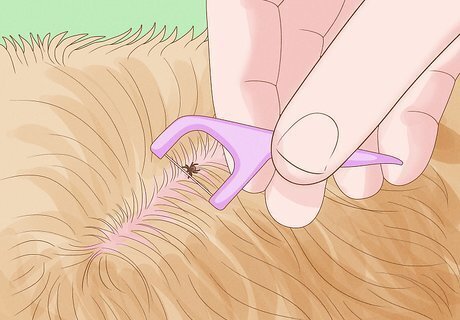
Wrapping dental floss around the parasite helps you extract the tick. First, unspool a length of dental floss. 6 inches will be more than enough. Next, loop the dental floss around the tick’s mouthparts, wrapping as close to the skin as possible. Tie a knot on the other side of the tick to form a small circle around the parasite's belly. Finally, tug upwards on the string to pull the tick from your dog’s skin. If you’re having trouble looping close enough to the skin, grab a straw. Loop and tie your floss around the straw. With the string still situated around the straw, place the straw over the belly of the tick, with the end as close to the head as possible. Next, slide the floss off of the straw. With a little luck, this will help you easily place your loop close to the tick's mouth.
Scrape the tick off with a credit card.
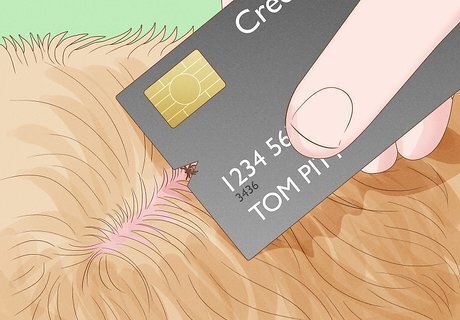
By cutting a "v" into your card, you can nudge the tick from your dog's skin. Cut a "v" that's no larger than the tick's head. Then, lining up your "v" with the tick's head, slide the card under the tick's belly, on your dog's skin. Now, try to gently edge the tick's head from your dog's skin with the card. Your goal is to remove the tick entirely, especially the head. These parasites attach to your dog via tiny hooks in the skin. In other words, attempting to forcefully rip the tick from your dog's skin risks leaving the head attached. C.J. Puotinen C.J. Puotinen, Holistic Pet Care Writer When removing ticks, take care not to squeeze the tick's body or leave the head embedded, as this can lead to infection. Gentle, steady pressure is key — rotate slowly without pulling too hard. And always disinfect the area after removal.
Force the tick to detach using heat and a needle.
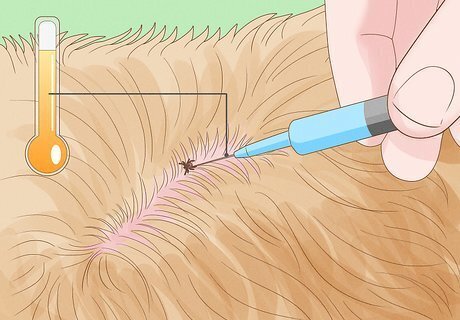
Using a hot needle, make the tick uncomfortable enough to let go of your dog's skin. First, locate your needle and a box of matches. Next, heat the needle by holding it inside a flame. Now that the needle is hot, hold it directly on top of the tick—if possible, on the parasite's head. Now, you wait. If all goes well, the heat will encourage the tick to dislodge its head. Note that this approach involves risk. If the tick dies while still attached to your dog's skin, removing the head could become even more challenging. Heat can also cause the tick to produce more saliva. This saliva can carry diseases able to infect your pet with illnesses. If you're in a pinch, you may decide this method is still worth trying. But if you have other options available, try something with less risk first.
Suffocate the tick with olive oil.
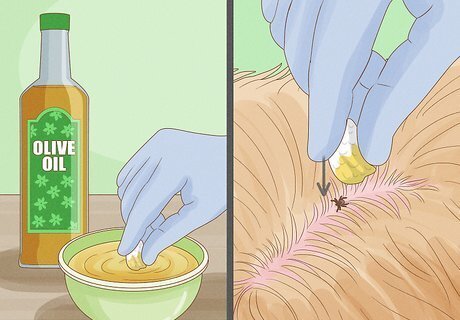
Place an oiled cotton ball over a tick to encourage it to detach. Though this home remedy isn't considered surefire solution, many pet owners swear by them. After applying oil to a cotton ball, hold it over the tick. Wait ~10 minutes to see if the tick detaches itself from your dog's skin.
Encourage the tick to let go using soap.
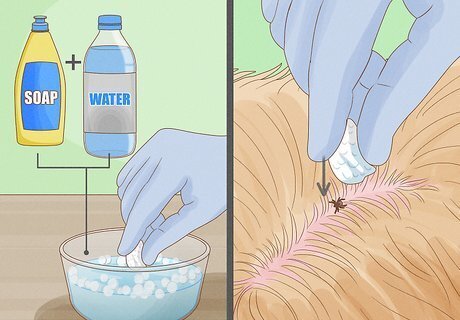
Hold a soapy cotton ball on top of the tick to make it uncomfortable. Soak your cotton ball in either hand soap or dish soap. Then, follow up by holding the cotton ball over the tick for around 10 minutes or until it lets go. You should already have these items at home, which makes this option super convenient. Though, keep in mind that results for this method are varied. This method doesn't show consistent successful results. If the tick hangs on, incorporate another removal technique.
Wash your dog with a flea or tick shampoo.
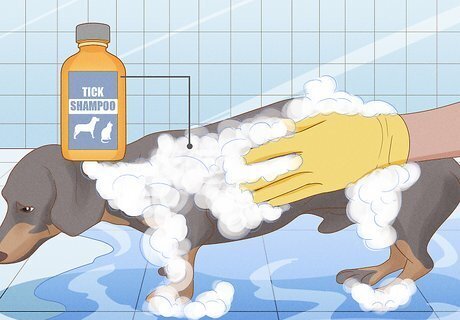
This helps to kill any remaining parasites on your dog's skin. These shampoos can cause adverse or allergic reactions in some pups, so first, get recommendations from your vet. Next, follow the package's instructions. Usually, this will mean wetting your dog's fur, thoroughly scrubbing the shampoo into the fur, and letting it sit for a specified amount of time. For your dog's safety and comfort, be careful not to get shampoo into their eyes or ears. To prevent future parasite bites, shampoo your dog weekly.
Use a tick-removal kit.
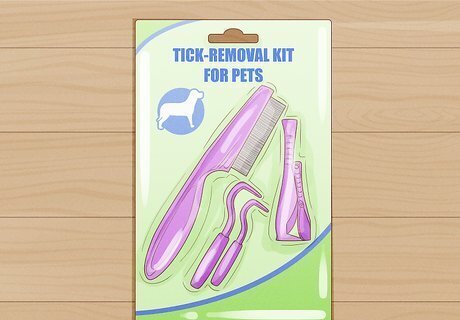
Buy a kit with tools specially made to remove ticks efficiently. Most products come with two tools: one made for bigger ticks and one made for nymphs. Typically, tick-removal kits make for easier and more effective tick removal. These usually put less pressure on the tick's body, reducing the risk of accidentally forcing the parasite to regurgitate harmful diseases. Purchase these at pet stores or online.
Steer clear of harmful removal methods.
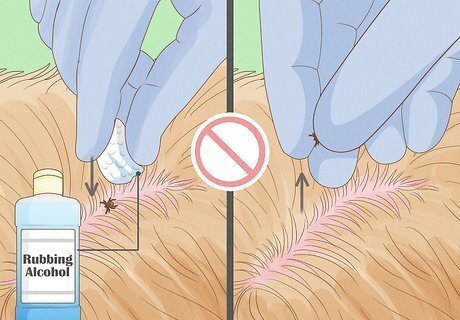
Removing a tick the wrong way increases the risk of illness. You may end up causing the tick to embed itself into the skin without actually killing it. Bursting the tick, causing it to produce more saliva, or causing it to regurgitate its stomach's contents could all release dangerous diseases capable of infecting your dog. Stay away from these methods: Smothering with alcohol, Vasoline, or nail polish Burning with cigarettes or matches Pulling the tick off with your fingers
Call your vet if you notice signs of infection.

Watch for a rash or irritated skin around the affected area. Once you remove the tick, your dog's risk of disease drops significantly. Even if you accidentally leave the head embedded, your dog will naturally push the parasite out in a matter of days. Your only concern is disease transmission, and you're likely to see signs of that in the form of a rash or irritated skin. Check your dog daily. If you notice abnormal skin around the tick bite, call your vet right away.



















Comments
0 comment